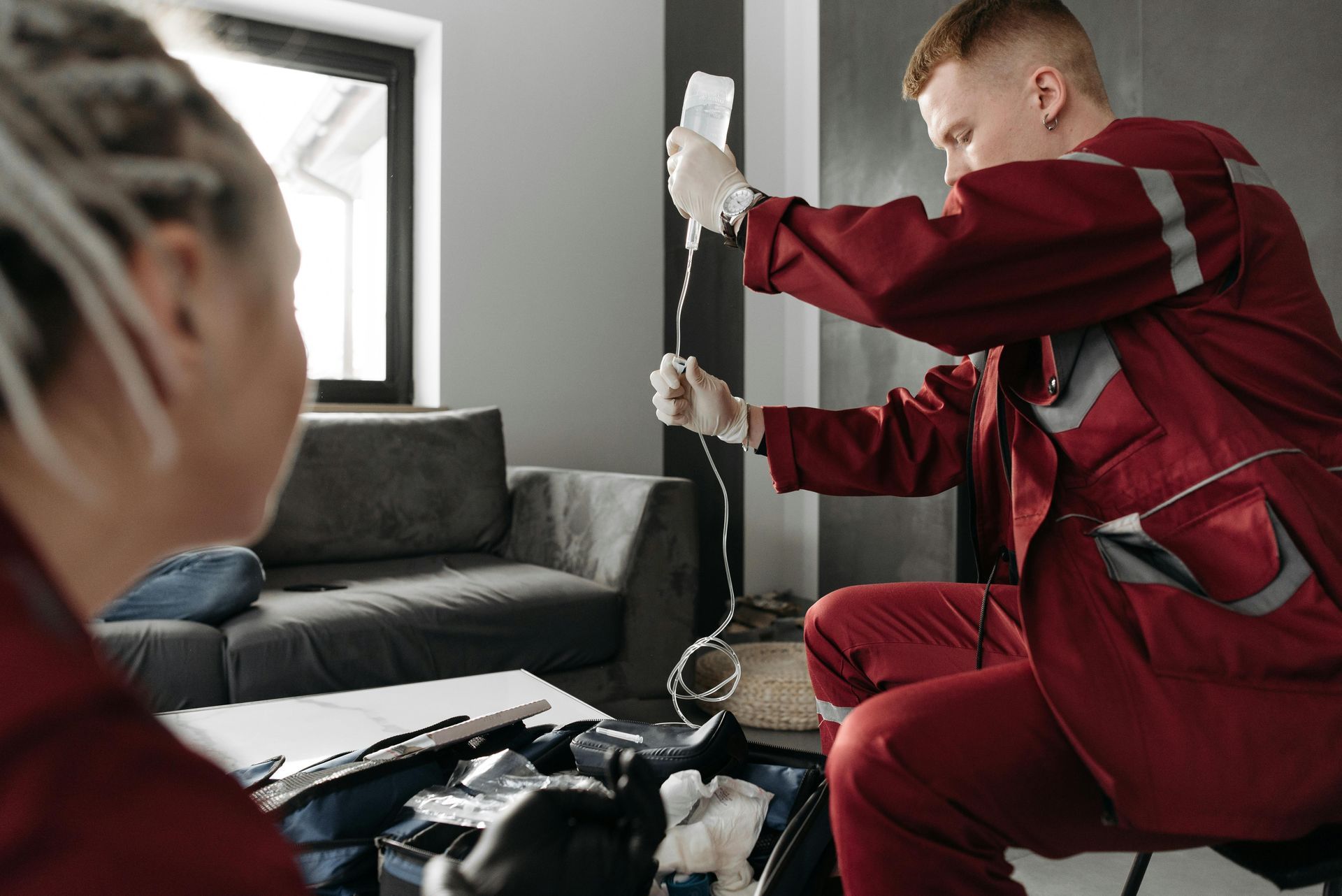Vitamin D IV Therapy: Fast, Effective Deficiency Treatment

Medically reviewed by Micaela Strevay, FNP-C, PMHNP-BC
Table of Contents

Vitamin D deficiency is a common issue that affects many individuals, leading to a range of health complications. Recognizing and addressing this deficiency is crucial for maintaining optimal health. One effective method gaining attention for its efficiency in delivering nutrients is IV therapy. This article delves into the intricacies of vitamin D deficiency and the role IV therapy can play in addressing it.
Understanding Vitamin D Deficiency
The Role of Vitamin D in the Body
Vitamin D is a fat-soluble vitamin that plays a vital role in many bodily functions. It is crucial for maintaining healthy bones and teeth, supporting immune function, brain health, and regulating insulin levels. Furthermore, vitamin D aids in calcium absorption, which is essential for skeletal health.
In addition to these roles, vitamin D influences cell growth, reduces inflammation, and possibly plays a role in chronic disease prevention. Hence, maintaining adequate levels of vitamin D is essential for overall health and wellness. Recent studies have even suggested that vitamin D may have a protective effect against certain types of cancer, cardiovascular diseases, and autoimmune disorders. This highlights the importance of not only understanding vitamin D's functions but also ensuring that we meet our daily requirements through sunlight exposure, diet, or supplementation.
Causes and Symptoms of Vitamin D Deficiency
Vitamin D deficiency can arise from several factors, including insufficient sunlight exposure, diet lacking in vitamin D-rich foods, and certain medical conditions that affect absorption. Individuals living in regions with long winters or those who spend significant time indoors are particularly at risk. Additionally, certain populations, such as the elderly, individuals with darker skin, and those with malabsorption syndromes, may face greater challenges in maintaining optimal vitamin D levels.
Symptoms of vitamin D deficiency may manifest in various ways, including:
- Fatigue and weakness
- Bone pain and soft bones
- Muscle weakness and cramps
- Immune system complications
- Depression and mood swings
Recognizing these symptoms early can lead to timely intervention and treatment. Moreover, it's important to note that some individuals may experience no symptoms at all, making it crucial to have regular check-ups and blood tests to monitor vitamin D levels, especially if one belongs to a high-risk group. The subtlety of symptoms can often lead to misdiagnosis or delay in treatment, emphasizing the need for awareness and proactive health measures.
The Science Behind IV Therapy
How IV Therapy Works
IV therapy, or intravenous therapy, involves delivering nutrients directly into the bloodstream through a vein. This method bypasses the digestive system, allowing for faster and more efficient absorption of vitamins and minerals, including vitamin D.
During an IV therapy session, a healthcare professional administers a carefully calculated blend of nutrients, including vitamin D, directly into the body. This approach can offer a significant advantage over oral supplements, especially for those with absorption issues.
Benefits of Using IV Therapy for Vitamin D Deficiency
IV therapy provides several benefits for individuals with vitamin D deficiency:
- Rapid Restoration: IV therapy ensures that vitamin D levels are restored quickly, making it ideal for those with severe deficiencies.
- Convenience: Treatments are often scheduled in a clinical setting, allowing for a structured and supportive environment.
- Customized Nutrient Blend: Treatments can be tailored to the individual's specific needs and health conditions.
- Improved Absorption: Nutrients bypass the digestive tract, helping individuals with malabsorption issues receive the required vitamins effectively.
These benefits make IV therapy an attractive option for many looking to remedy their vitamin D deficiency efficiently.
Preparing for IV Therapy
What to Expect During Your First Session
If you're considering IV therapy for vitamin D deficiency, it's essential to know what to expect during your first session. Initially, a healthcare professional will conduct a thorough assessment to determine your vitamin D levels and overall health status.
Once the assessment is complete, you will be seated comfortably in a reclined chair. A skilled technician will insert a thin needle into your vein to deliver the intravenous solution. The procedure is typically painless and lasts about 30 to 60 minutes, depending on the dosage.
Potential Side Effects and Risks
While IV therapy is generally safe, some individuals may experience mild side effects, including:
- Bruising or swelling at the injection site
- Temporary discomfort during needle insertion
- Nausea or light-headedness
Discussing potential risks with your healthcare provider is essential to ensure you are a suitable candidate for IV therapy.
The Process of IV Therapy for Vitamin D Deficiency
Initial Assessment and Diagnosis
The first step in receiving IV therapy for vitamin D deficiency is an initial assessment. This assessment typically includes blood tests to quantify your vitamin D levels and evaluate your overall health. Based on the results, healthcare professionals can recommend a suitable treatment plan tailored to your needs.
Treatment Plan and Procedure
Once the assessment is complete, your healthcare provider will create a personalized treatment plan. This may involve scheduling regular IV therapy sessions over weeks or months, depending on the severity of your deficiency.
During each procedure, the technician will carefully monitor your vitals and comfort levels to ensure the process goes smoothly. Adequate hydration before the session can enhance the experience and improve absorption rates.
Post-IV Therapy Care and Maintenance
Aftercare Tips and Recommendations
After receiving IV therapy, there are a few aftercare tips you should follow to optimize your body’s response and maintain good health:
- Stay hydrated by drinking plenty of water.
- Avoid strenuous activities for a few hours post-treatment.
- Observe the injection site for any unusual signs, such as persistent swelling or redness.
Following these simple steps can help ensure a smooth recovery and promote better absorption of the administered nutrients.
Maintaining Vitamin D Levels Post-Therapy
After undergoing IV therapy, maintaining appropriate vitamin D levels is crucial to prevent future deficiencies. This can include:
- Regular check-ups with your healthcare provider to monitor vitamin D levels.
- Incorporating vitamin D-rich foods into your diet, such as fatty fish, fortified dairy products, and egg yolks.
- Ensuring adequate exposure to sunlight, while taking precautions to protect your skin.
By making these lifestyle adjustments and actively monitoring your vitamin D levels, you can sustain the benefits gained through IV therapy.
In conclusion, IV therapy offers a promising solution for those struggling with vitamin D deficiency. By understanding the condition, the science behind IV therapy, and how to prepare for and maintain your health post-treatment, you can take significant steps toward improved well-being.





